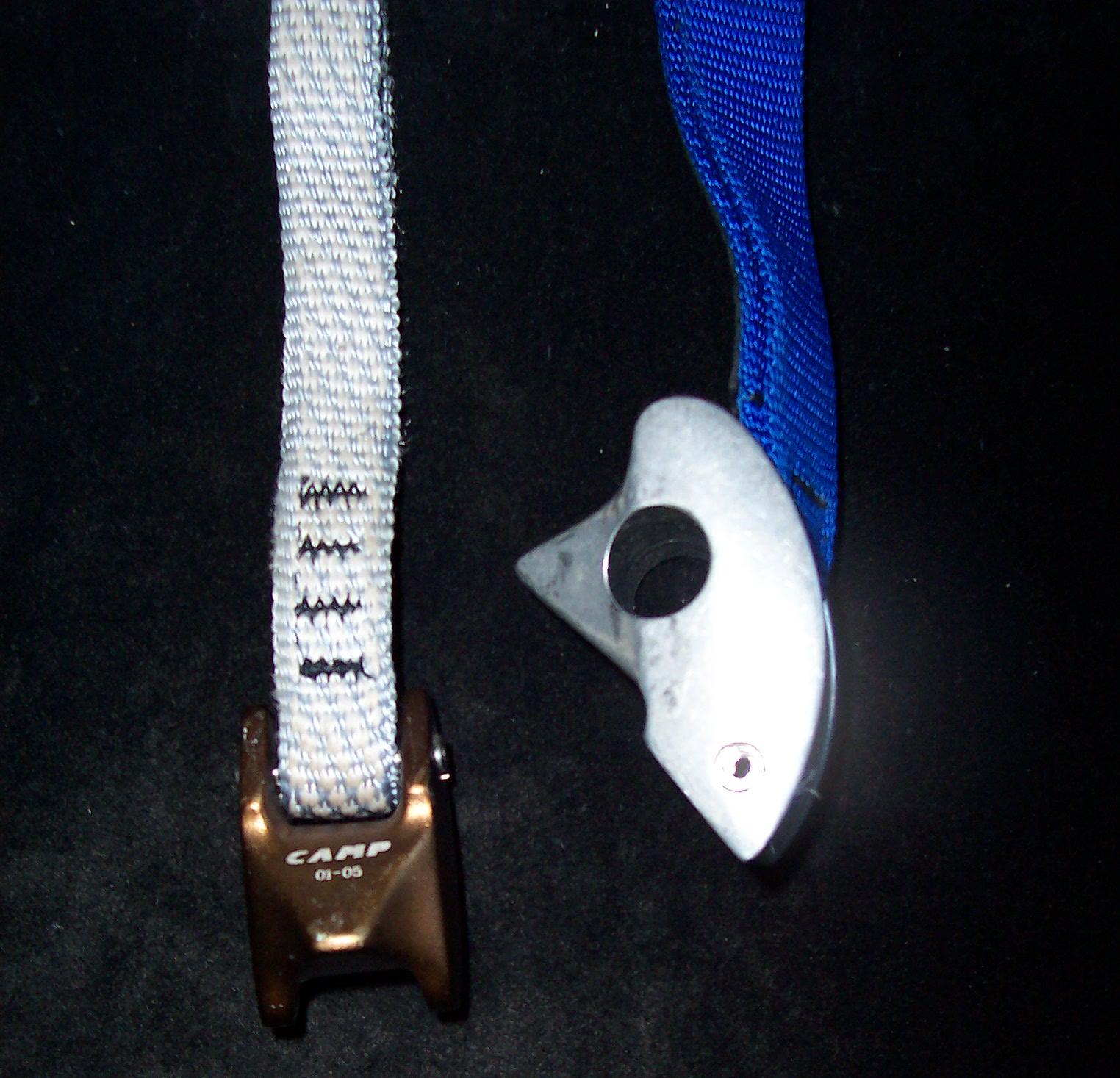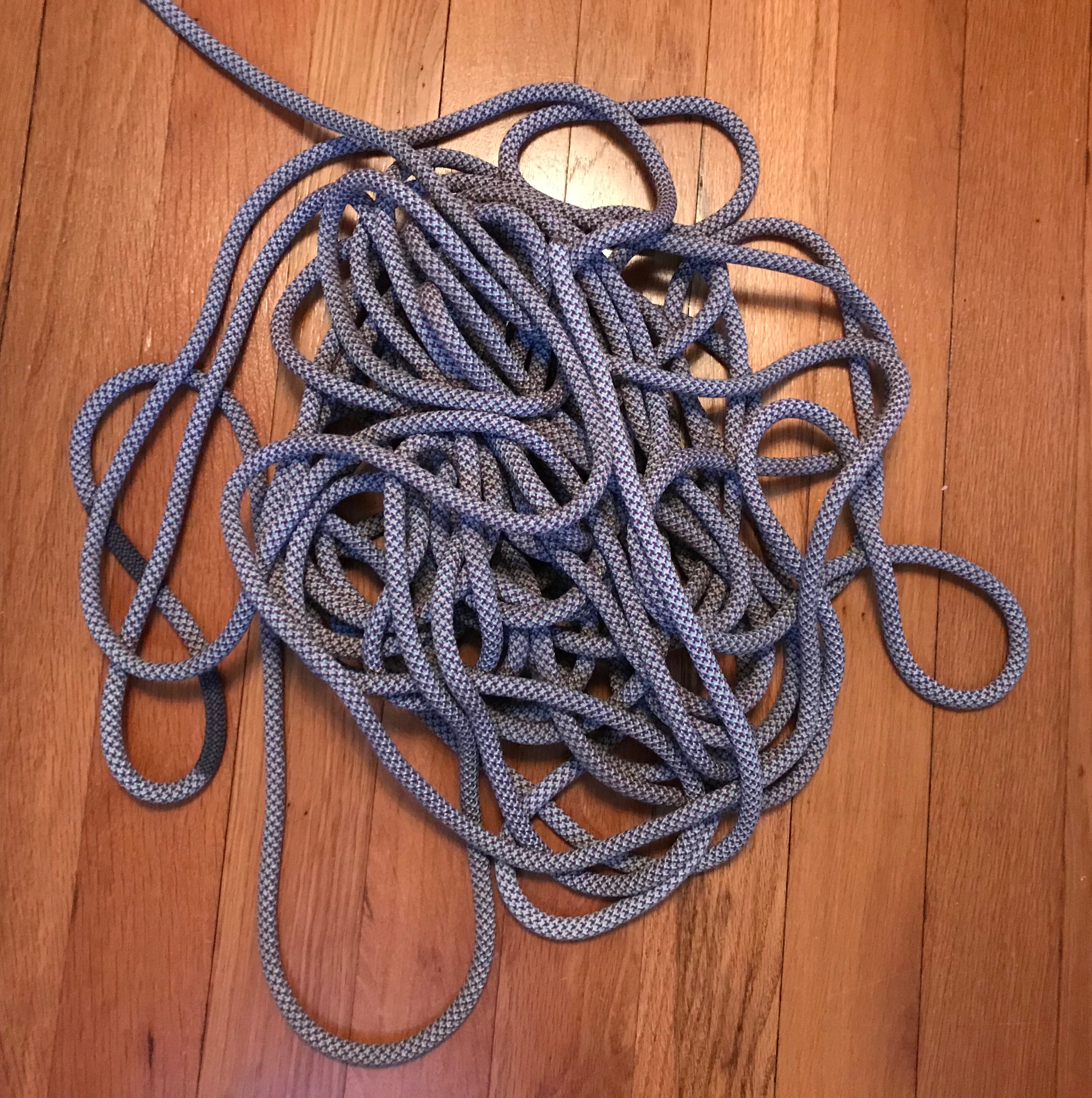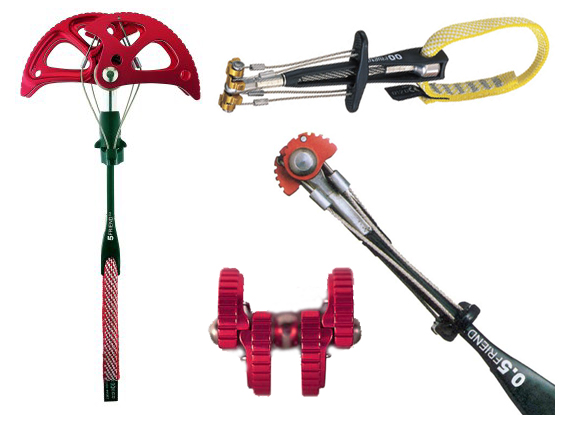|
Tricam
A tricam is a type of climbing protection equipment. A versatile nut/cam hybrid, the Tricam was invented by Greg Lowe in 1973, and came to market in 1981. They are currently manufactured by C.A.M.P. of Premana Italy. Design The Tricam is a passive camming device consisting of a carefully shaped aluminium-alloy cam attached to a length of webbing tape. Most sizes are produced as a solid forged unit, but the larger sizes are made from riveted sheet metal. The device is inserted into a crack so that pulling on the tape makes the piece cam outward against the sides of the crack, gripping the rock tighter. Camming action is achieved by the position of the pointed fulcrum or pivot of the cam relative to the attachment of the tape. As the webbing is pulled, the downward force is pivoted onto the point, which can bite into soft rock or ice and increases the holding power of the tricam. [...More Info...] [...Related Items...] OR: [Wikipedia] [Google] [Baidu] |
Tricam
A tricam is a type of climbing protection equipment. A versatile nut/cam hybrid, the Tricam was invented by Greg Lowe in 1973, and came to market in 1981. They are currently manufactured by C.A.M.P. of Premana Italy. Design The Tricam is a passive camming device consisting of a carefully shaped aluminium-alloy cam attached to a length of webbing tape. Most sizes are produced as a solid forged unit, but the larger sizes are made from riveted sheet metal. The device is inserted into a crack so that pulling on the tape makes the piece cam outward against the sides of the crack, gripping the rock tighter. Camming action is achieved by the position of the pointed fulcrum or pivot of the cam relative to the attachment of the tape. As the webbing is pulled, the downward force is pivoted onto the point, which can bite into soft rock or ice and increases the holding power of the tricam. [...More Info...] [...Related Items...] OR: [Wikipedia] [Google] [Baidu] |
Climbing Equipment
A wide range of equipment is used during rock or any other type of climbing that includes equipment commonly used to protect a climber against the consequences of a fall. Rope, cord and webbing Climbing ropes are typically of kernmantle construction, consisting of a core (kern) of long twisted fibres and an outer sheath (mantle) of woven coloured fibres. The core provides about 70% of the tensile strength, while the sheath is a durable layer that protects the core and gives the rope desirable handling characteristics. Ropes used for climbing can be divided into two classes: dynamic ropes and low elongation ropes (sometimes called "static" ropes). Dynamic ropes are designed to absorb the energy of a falling climber, and are usually used as belaying ropes. When a climber falls, the rope stretches, reducing the maximum force experienced by the climber, their belayer, and equipment. Low elongation ropes stretch much less, and are usually used in anchoring systems. They are al ... [...More Info...] [...Related Items...] OR: [Wikipedia] [Google] [Baidu] |
Climbing Protection
Climbing protection is any of a variety of devices employed to reduce risk and protect others while climbing rock and ice. It includes such items as nylon webbing and metal nuts, cams, bolts, and pitons. Different forms of climbing draw on varying forms of protection and the systems that are created from its elements. Types of climbing There are a number of ways to "protect" a climb, varying according to the type of climbing: Lead climbing A lead climber places protection (temporary or permanent anchors) in the rock, snow, or ice establishing a climbing route. The rope is clipped through carabiners (often joined by a short length of webbing into a pair known as a quickdraw) which are in turn connected to the protection. The belayer pays out rope during the ascent, and manually arrests the climber's fall by locking the rope, typically with some form of belay device. Aid climbing Aid climbing involves standing on or pulling oneself up via devices attached to fixed or pl ... [...More Info...] [...Related Items...] OR: [Wikipedia] [Google] [Baidu] |
CAMP (company)
CAMP (also spelled C.A.M.P., and called ''Camp'', the Italian abbreviation for "Concezione Articoli Montagna Premana"; the English equivalents are "Conception" (''not'' "concession"), "Articles", "Mountains", "Premana") manufactures equipment for climbing and associated activities such as ski mountaineering and industrial safety (i.e., working at heights). The company is based in Italy. CAMP manufactures a wide range of products, including ice axes, crampons, ice screws, pitons, carabiners, nuts, tricams, camming devices, harnesses, helmets, ropes, rucksacks, tents, ski-racing clothing, and various snow tools. The company was founded by Nicola Codega, a blacksmith, in 1889 in the Italian alpine village of Premana, where it is still based. Originally producing wrought-iron goods, an order in 1920 for ice axes for the Italian army was their first foray into the world of climbing equipment. From there the company extended its climbing range to include crampons, pitons, and nuts, ... [...More Info...] [...Related Items...] OR: [Wikipedia] [Google] [Baidu] |
Spring-loaded Camming Device
A spring-loaded camming device (also SLCD, cam or friend) is a piece of rock climbing or mountaineering protection equipment. It consists of two, three, or four cams mounted on a common axle or two adjacent axles, so that pulling on the axle forces the cams to spread farther apart. This is then attached to a sling and carabiner at the end of the stem. The SLCD is used by pulling on the "trigger" (a small handle) so the cams retract together, then inserting it into a crack or pocket in the rock and releasing the trigger to allow the cams to expand. A pull on the rope, such as that generated by a climber falling, will cause a properly placed SLCD to convert the pulling force along the stem of the unit into outwards pressure on the rock, generating massive amounts of friction and preventing the removal of the unit from the rock. Because of the large forces which are exerted on the rock when an SLCD is fallen on, it is very important that SLCDs are only placed in solid, strong roc ... [...More Info...] [...Related Items...] OR: [Wikipedia] [Google] [Baidu] |
The Freedom Of The Hills
''Mountaineering: The Freedom of the Hills'' is often considered the standard textbook for mountaineering and climbing in North America. The book was first published in 1960 by The Mountaineers of Seattle, Washington. The book was written by a team of over 40 experts in the field. The book grew out of the annual climbing course run since 1935 by the Mountaineers, for which the reading material was originally a combination of European works and lecturers' mimeo outlines. These were assembled into the ''Climber's Notebook'' and published by the Mountaineers as the hardbound ''Mountaineers Handbook'' in 1948. By 1955 the rapid postwar evolution of climbing techniques and tools had made the ''Handbook'' out of date, and the effort was begun to produce ''Freedom of the Hills''. Nearly 80 major contributors are credited in the first edition and were organized by a committee of 8 editors. The first four editions were only available in hardcover. Editions Chapter list In the 9th ... [...More Info...] [...Related Items...] OR: [Wikipedia] [Google] [Baidu] |
Greg Lowe
Greg Lowe (born in Pittsburgh) is a noted mountain climber, photographer, Academy Award nominated cinematographer, and co-founder of Lowe Alpine, along with his brothers Jeff and Mike Lowe. Lowe invented the internal frame backpack. He established Lowe Alpine in his workshed in Colorado in 1967. In addition to backpacking gear Lowe is a pioneer in rock climbing hardware, developing some of the first cam-lever protection devices. Retrieved February 27, 2011. See also * * |
Aluminium
Aluminium (aluminum in American and Canadian English) is a chemical element with the symbol Al and atomic number 13. Aluminium has a density lower than those of other common metals, at approximately one third that of steel. It has a great affinity towards oxygen, and forms a protective layer of oxide on the surface when exposed to air. Aluminium visually resembles silver, both in its color and in its great ability to reflect light. It is soft, non-magnetic and ductile. It has one stable isotope, 27Al; this isotope is very common, making aluminium the twelfth most common element in the Universe. The radioactivity of 26Al is used in radiodating. Chemically, aluminium is a post-transition metal in the boron group; as is common for the group, aluminium forms compounds primarily in the +3 oxidation state. The aluminium cation Al3+ is small and highly charged; as such, it is polarizing, and bonds aluminium forms tend towards covalency. The strong affinity tow ... [...More Info...] [...Related Items...] OR: [Wikipedia] [Google] [Baidu] |
Webbing
red, blue and black auto_racing.html"_;"title="nylon_webbing_as_used_in_auto_racing">nylon_webbing_as_used_in_auto_racing_harnesses Webbing_is_a_strong_nylon_webbing_as_used_in_auto_racing_harnesses">auto_racing.html"_;"title="nylon_webbing_as_used_in_auto_racing">nylon_webbing_as_used_in_auto_racing_harnesses Webbing_is_a_strong_Textile">fabric_weaving.html" "title="Textile.html" "title="auto_racing_harnesses.html" ;"title="auto_racing.html" ;"title="nylon webbing as used in auto racing">nylon webbing as used in auto racing harnesses">auto_racing.html" ;"title="nylon webbing as used in auto racing">nylon webbing as used in auto racing harnesses Webbing is a strong Textile">fabric weaving">woven as a flat strip or tube of varying width and fibres, often used in place of rope. It is a versatile component used in climbing, slacklining, furniture manufacturing, automobile safety, auto racing, tow truck, towing, parachuting, military apparel, load securing, and many other fiel ... [...More Info...] [...Related Items...] OR: [Wikipedia] [Google] [Baidu] |
Forging
Forging is a manufacturing process involving the shaping of metal using localized compressive forces. The blows are delivered with a hammer (often a power hammer) or a die. Forging is often classified according to the temperature at which it is performed: cold forging (a type of cold working), warm forging, or hot forging (a type of hot working). For the latter two, the metal is heated, usually in a forge. Forged parts can range in weight from less than a kilogram to hundreds of metric tons.Degarmo, p. 389 Forging has been done by smiths for millennia; the traditional products were kitchenware, hardware, hand tools, edged weapons, cymbals, and jewellery. Since the Industrial Revolution, forged parts are widely used in mechanisms and machines wherever a component requires high strength; such forgings usually require further processing (such as machining) to achieve a finished part. Today, forging is a major worldwide industry. History Forging is one of the oldest known me ... [...More Info...] [...Related Items...] OR: [Wikipedia] [Google] [Baidu] |
Rivet
A rivet is a permanent mechanical fastener. Before being installed, a rivet consists of a smooth cylindrical shaft with a head on one end. The end opposite to the head is called the ''tail''. On installation, the rivet is placed in a punched or drilled hole, and the tail is ''upset'', or ''bucked'' (i.e., deformed), so that it expands to about 1.5 times the original shaft diameter, holding the rivet in place. In other words, the pounding or pulling creates a new "head" on the tail end by smashing the "tail" material flatter, resulting in a rivet that is roughly a dumbbell shape. To distinguish between the two ends of the rivet, the original head is called the ''factory head'' and the deformed end is called the ''shop head'' or buck-tail. Because there is effectively a head on each end of an installed rivet, it can support tension loads. However, it is much more capable of supporting shear loads (loads perpendicular to the axis of the shaft). Fastenings used in traditional w ... [...More Info...] [...Related Items...] OR: [Wikipedia] [Google] [Baidu] |
Fulcrum (mechanics)
A lever is a simple machine consisting of a beam or rigid rod pivoted at a fixed hinge, or ''fulcrum''. A lever is a rigid body capable of rotating on a point on itself. On the basis of the locations of fulcrum, load and effort, the lever is divided into three types. Also, leverage is mechanical advantage gained in a system. It is one of the six simple machines identified by Renaissance scientists. A lever amplifies an input force to provide a greater output force, which is said to provide leverage. The ratio of the output force to the input force is the mechanical advantage of the lever. As such, the lever is a mechanical advantage device, trading off force against movement. Etymology The word "lever" entered English around 1300 from Old French, in which the word was ''levier''. This sprang from the stem of the verb ''lever'', meaning "to raise". The verb, in turn, goes back to the Latin ''levare'', itself from the adjective ''levis'', meaning "light" (as in "not heavy"). The ... [...More Info...] [...Related Items...] OR: [Wikipedia] [Google] [Baidu] |







